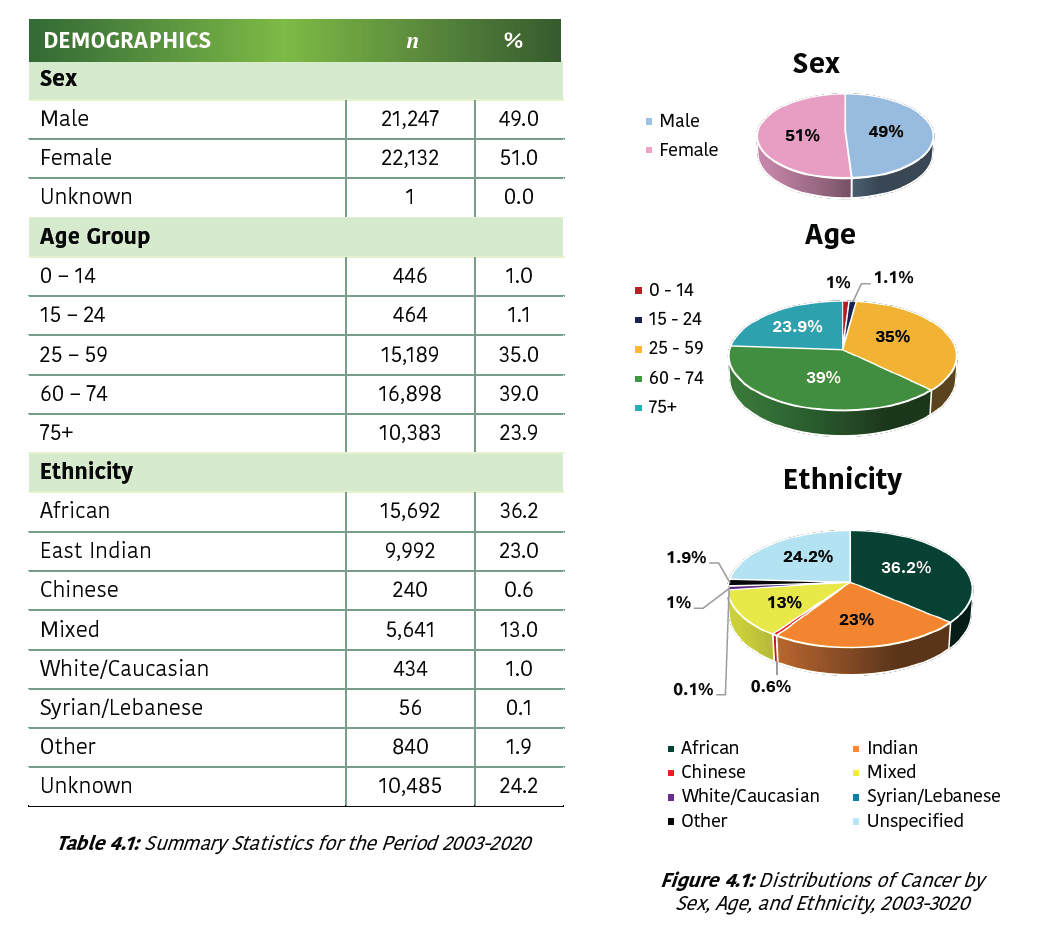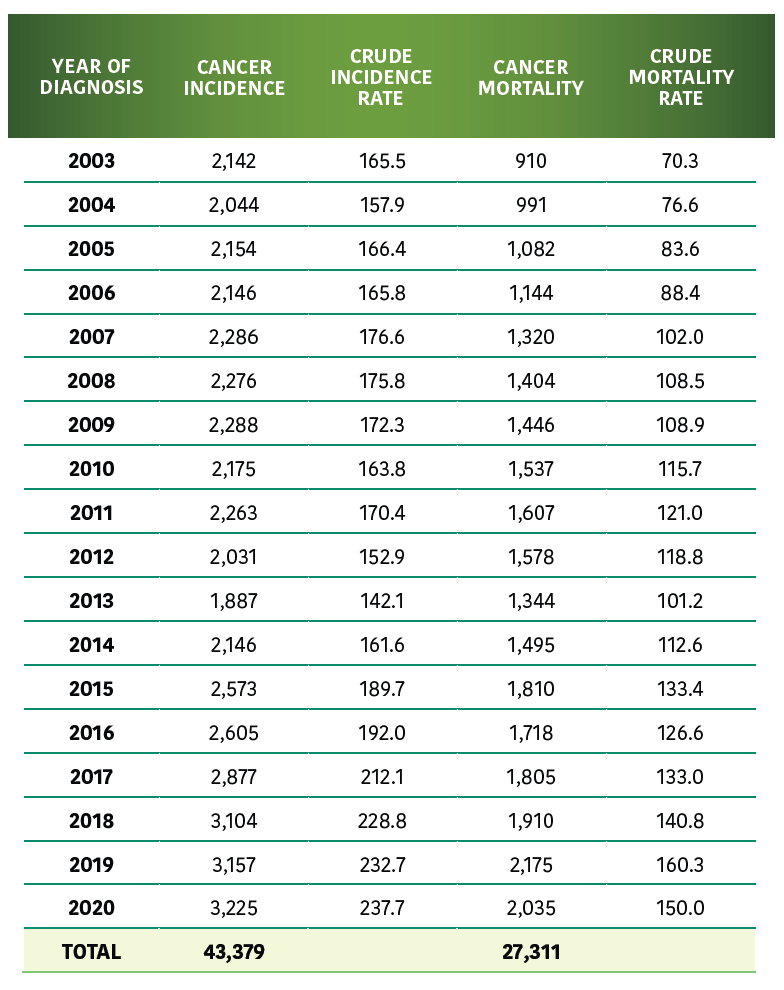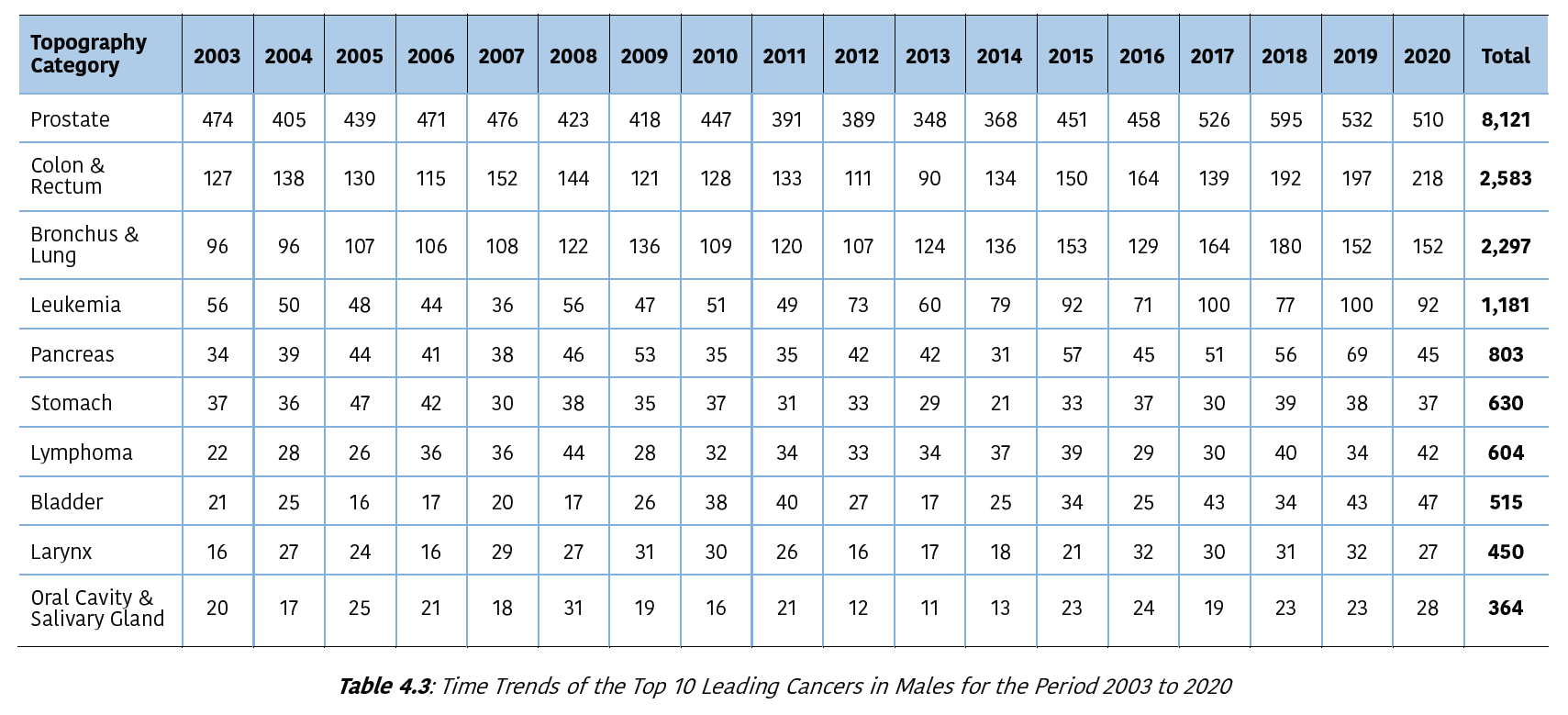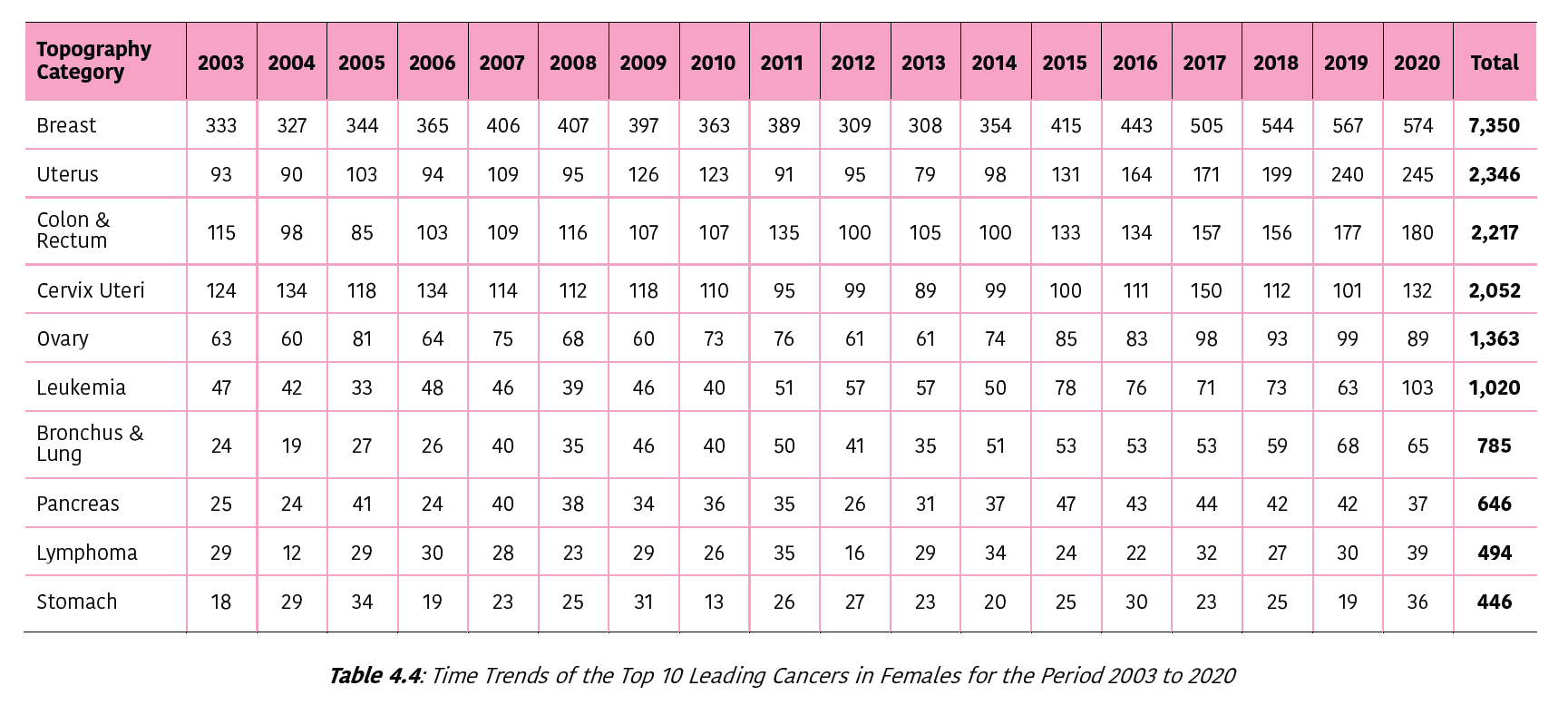Demographics
Between 2003 and 2020, 49% of the 43,380 individuals diagnosed with cancer were male, and 51% were female, as reported in the Cancer Registry.
One case of cancer (in 2008) — with an unknown sex, within the age category of 0 to 14 years, having an unknown ethnicity — was excluded from the analysis.
The majority (97.9%) of the persons diagnosed with cancer were over 25 years of age, with most persons (39%) falling within the age category of 60 to 74 years old. Most cases were among Africans (36.2%), followed by East Indians (23%). Additionally, 24.2% of cases were of unknown ethnicity.
See Table 4.1 and Figure 4.1
One case of cancer (in 2008) — with an unknown sex, within the age category of 0 to 14 years, having an unknown ethnicity — was excluded from the analysis.
The majority (97.9%) of the persons diagnosed with cancer were over 25 years of age, with most persons (39%) falling within the age category of 60 to 74 years old. Most cases were among Africans (36.2%), followed by East Indians (23%). Additionally, 24.2% of cases were of unknown ethnicity.
See Table 4.1 and Figure 4.1
Cancer Incidence
The year 2013 showed the lowest cancer incidence (n = 1,887; CR = 142.1), while 2020 had the highest (n = 3,225; CR = 237.7).
During the period 2003 to 2008:
2004 had the lowest incidence rate of 157.9 cases per 100,000 persons, while 2007 had the highest incidence rate of 176.6 cases per 100,000 persons, with a moderate upward trend in cancer cases.
During the period 2009 to 2014:
2013 had the lowest incidence rate, while 2009 had the highest incidence rate of 172.3 cases per 100,000, showing a general downward trend in cancer cases.
During the period 2015 to 2020:
2015 had the lowest incidence rate of 189.7 persons per 100,000, while 2020 had the highest, with a steep upward trend in cancer cases.
Cancer Mortality
There is a general upward trend in cancer mortality, with the year 2003 having the lowest mortality rate (n = 910; MR = 70.3), while 2019 had the highest (n =2,175; MR = 160.3).
During the period 2003 to 2008:
2003 had the lowest mortality rate of 70.3 deaths per 100,000 persons, while 2008 had the highest mortality rate of 108.5 deaths per 100,000 persons, with a steady upward trend in mortality.
During the period 2009 to 2014:
2013 had the lowest mortality rate of 101.2 deaths per 100,000 persons, while 2011 had the highest mortality rate of 121 deaths per 100,000 persons, with a general upward trend from 2009 to 2011. However, in 2013, there was a decline and then a gradual upward trend in 2014.
During the period 2015 to 2020:
2016 had the lowest mortality rate of 126.6 deaths per 100,000 persons, while 2019 had the highest mortality rate of 160.3 deaths per 100,000. There was an upward trend from 2016 to 2019, followed by a decline in 2020.
See Table 4.2
Time Trend of Leading Cancers
TOP 10 LEADING CANCERS IN MALES
Prostate cancer had the highest incidence during the period 2003 to 2020.
There were 609 cancer cases with an unknown primary site among men during the period 2003 to 2020. This may mean that the cancer was diagnosed after it had spread to another organ and the primary organ could not be determined.
See Table 4.3 shows the top ten leading cancers in males
for the period 2003 to 2020
for the period 2003 to 2020
TOP 10 LEADING CANCERS IN FEMALES
Breast cancer had the highest incidence during the period 2003 to 2020.
There were 584 cancer cases with an unknown primary site among women during the period 2003 to 2020. This may mean that the cancer was diagnosed after it had spread to another organ and the primary organ could not be determined.
See Table 4.4 shows the top ten leading cancers in females
for the period 2003 to 2020
for the period 2003 to 2020



